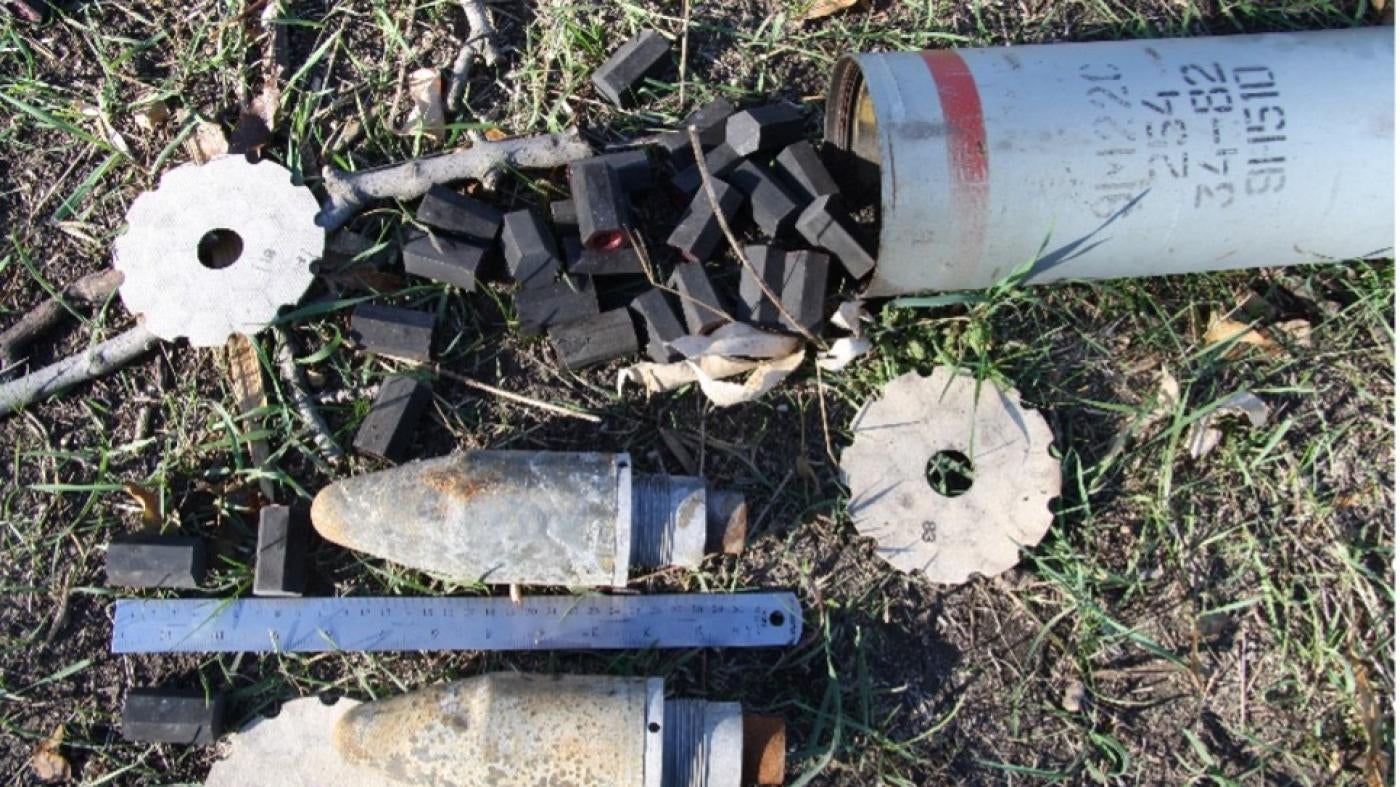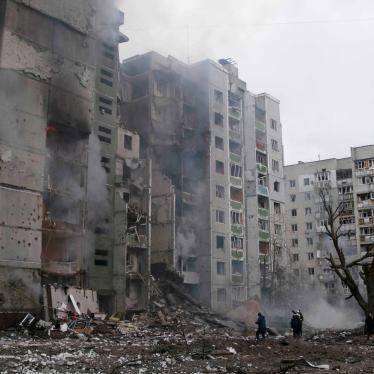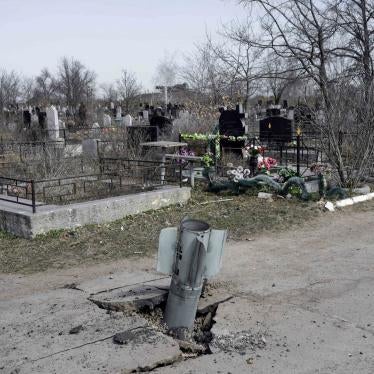Incendiary weapons are among the cruelest weapons used in contemporary armed conflict. These weapons, which produce heat and fire through the chemical reaction of a flammable substance, cause immediate and lifelong human suffering in addition to destroying homes and other civilian structures. Both Russia and Ukraine possess incendiary weapons and have used them in previous conflicts.
- What are incendiary weapons, and how are they used?
- What are the human costs of incendiary weapons?
- Where have incendiary weapons been used recently?
- Were incendiary weapons used in the 2014-2015 conflict in eastern Ukraine?
- What is white phosphorus?
- Where has white phosphorus been used?
- How does international humanitarian law govern incendiary weapons?
- Does CCW Protocol III provide effective humanitarian protections from incendiary weapons?
Incendiary weapons are munitions that produce fire through a chemical reaction. In modern warfare, these weapons are often used to ignite fuel and ammunition supplies, destroy vehicles and other equipment, and attack personnel. Napalm, widely used during the Vietnam War, is the most well-known incendiary substance.
Incendiary weapons inflict excruciating burns, sometimes to the bone, and can cause respiratory damage, infection, shock, and organ damage. Over time, extensive scarring tightens muscle tissue and creates physical disabilities. The trauma of the attack, the painful treatment that follows, and appearance-changing scars lead to psychological harm and social exclusion.
The inadequacies of health care available in armed conflict settings exacerbate the already difficult process of treating serious burns. Long-term disabilities, the cost of medical care, and the loss of property associated with incendiary weapons have adverse socioeconomic impacts. Incendiary weapons also start fires that can destroy homes, damage critical infrastructure and crops, and kill livestock.
In the past 15 years, Human Rights Watch has documented the use of incendiary weapons in Afghanistan, Gaza, Iraq, Syria, Ukraine, and Yemen.
In Syria, Human Rights Watch documented over 120 incidents involving incendiary weapons from 2012 to 2018 by the Syrian-Russian military alliance, which took place in six governorates: Aleppo, Damascus, Damascus Countryside, Daraa, Hama, and Idlib. The volunteer organization Syria Civil Defense reported, for example, that on March 16, 2018, an incendiary weapon attack on Kafr Batna, in Eastern Ghouta, killed at least 61 people and injured more than 200. In another incident, Syrian government forces dropped an incendiary weapon on a high school in Urum al-Kubra on August 26, 2013.
Russia-backed separatist forces used ground-launched incendiary weapons, in particular 9M22S Grad rockets, in July-August 2014 in at least two towns in eastern Ukraine, Ilovaisk, and Luhansk. They burned several homes and endangered civilians.
Although not defined as an incendiary weapon under current weapons law, white phosphorus is notorious for the severity of the injuries it causes. White phosphorus is highly soluble in fat and therefore deeply burns human flesh. If fragments of white phosphorus enter the bloodstream, they can lead to multiple organ failure. Already-dressed wounds can reignite when dressings are removed, and they are re-exposed to oxygen.
White phosphorus munitions operate in the same way as incendiary weapons: by setting fires and causing burns “through the action of flame, heat, or combination thereof, produced by a chemical reaction of a substance delivered on the target.” As discussed below, they fall outside the current treaty definition of incendiary weapons because they are “primarily designed” to create a smokescreen to hide military operations.
White phosphorus munitions have also been used repeatedly over the past 15 years, including by US-led coalition forces against the Islamic State (ISIS) in Iraq and Syria in 2017; by Saudi Arabia-led coalition forces in Yemen in 2016; by Israel in Gaza in 2008-2009; by both the International Security Assistance Force (ISAF) and the Taliban in Afghanistan between 2005-2011; by Ethiopian forces in Somalia in 2007; and by the United States in Iraq in 2004.
Incendiary weapons are governed by Protocol III to the 1980 Convention on Conventional Weapons (CCW). The protocol seeks to protect civilians and civilian objects by regulating the use of incendiary weapons in “concentrations of civilians” and in “forests and other kinds of plant cover.”
Protocol III prohibits the use of air-dropped incendiary weapons in populated areas but allows the use of ground-delivered models in certain circumstances. Because all incendiary weapons cause the same effects, this arbitrary and outdated distinction should be eliminated. A complete ban on incendiary weapons would have the greatest humanitarian benefits.
The drafters of Protocol III focused on regulating the incendiary weapons most troubling at the time of its negotiation: air-dropped weapons specifically designed to burn and set fires, notably those containing napalm. This narrow scope, however, is a legacy of the 1970s and is no longer appropriate today.
Protocol III contains two major loopholes that reduce its legal and normative power and its ability to protect civilians:
- Article 1 of the protocol narrowly defines an incendiary weapon as “any weapon or munition primarily designed to set fire to objects or cause burn injury to persons” (emphasis added). This definition excludes multipurpose munitions, notably those containing white phosphorus, which set fire and cause burns but are “primarily designed” for other uses, such as marking, obscuring, or signaling.
- Article 2 restrictions on use arbitrarily differentiate between incendiary weapons based on their delivery system. Article 2 comprehensively prohibits the use of air-dropped incendiary weapons in concentrations of civilians, but it allows the use of ground-launched incendiary weapons in concentrations of civilians when the military target is “clearly separated from the concentration of civilians and all feasible precautions are taken” to limit the incendiary effects and minimize injury or loss of life to civilians.
Human Rights Watch calls on countries that are party to the CCW to strengthen Protocol III by closing these loopholes. They should adopt an effects-based definition of incendiary weapons, which encompasses multi-purpose munitions, and prohibit the use of all incendiary weapons, regardless of their delivery system, in concentrations of civilians.




